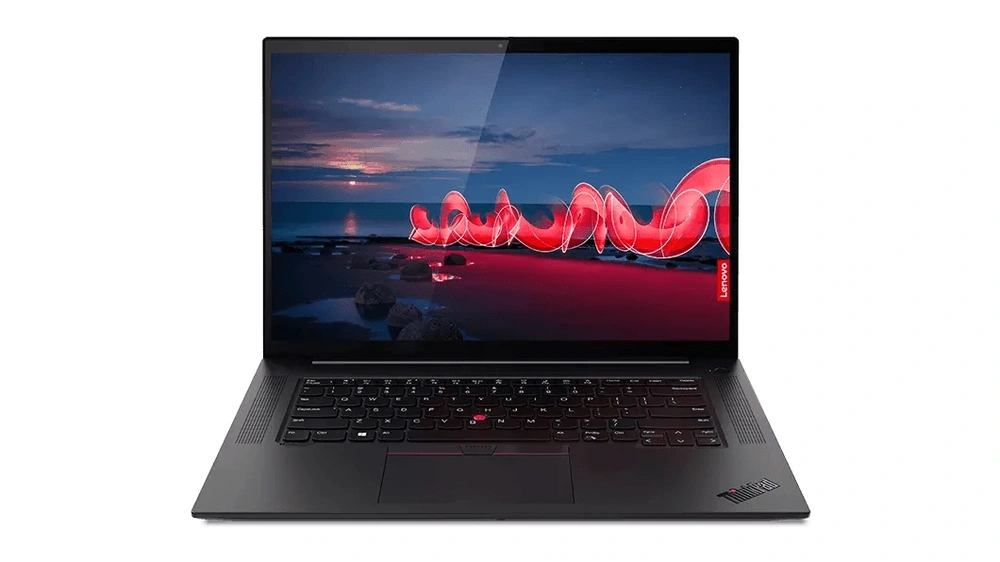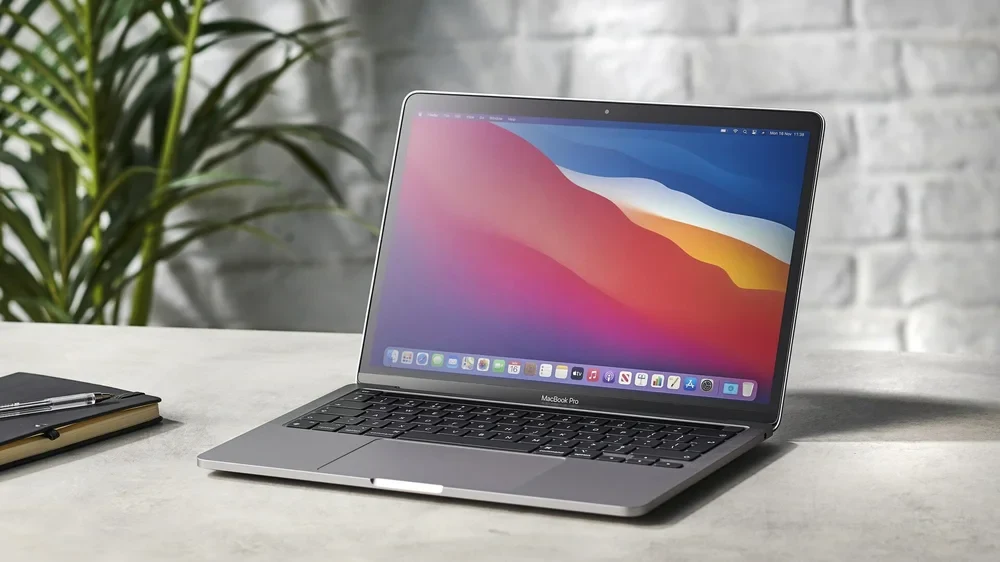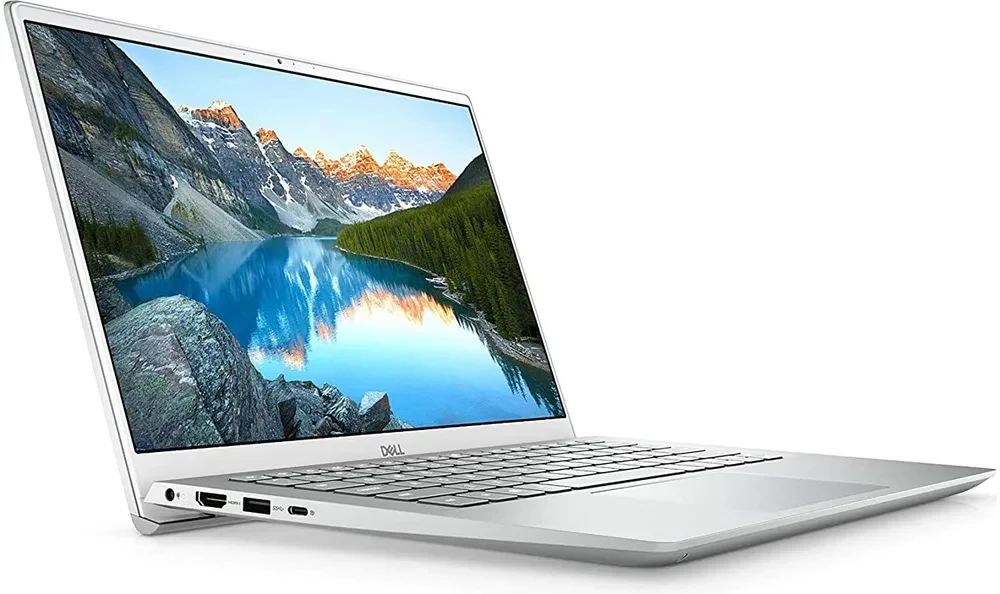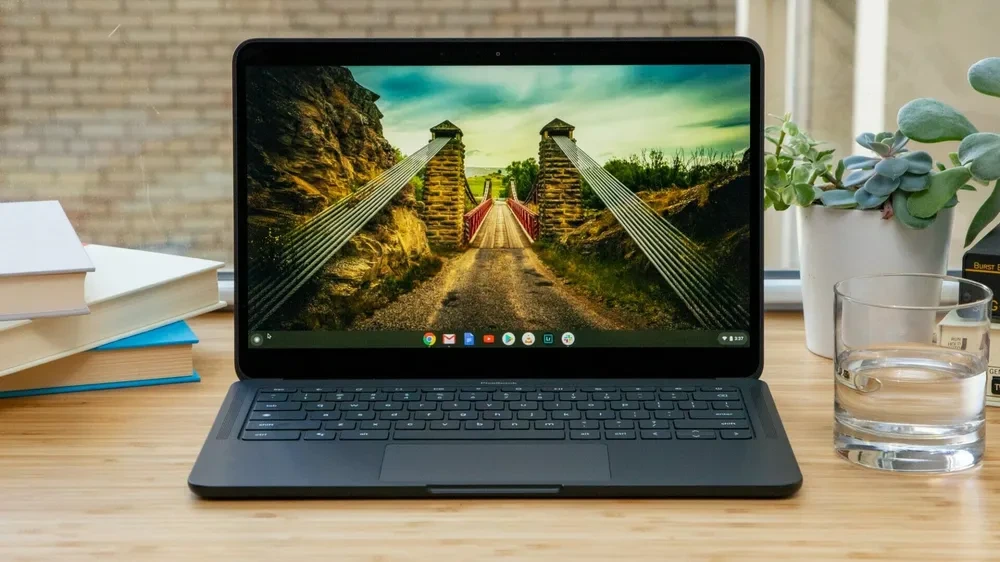Do you get a thrill from coding games? Maybe you’re an app developer looking for the best machine for your next project? Speedy performance, a comfortable keyboard, plenty of SSD storage, RAM, cores and threads are the essential elements of the best programming laptop.
With tech progressing at a rapid pace, even in the wake of the global semiconductor shortage, there are plenty of fantastic choices to take the title of the best computer for programming games, apps, sites, or whatever project you have in mind.
Taking the time to assess a potential machine is critical; you don’t want to end up with a lemon. The reality is that a programming laptop is a big investment, and we’re talking tens of thousands of Rands here. That’s why we decided to put together this review of the best programming laptops.
Whether you’re working at a coffee shop in Camps Bay in Cape Town or from your home in the northern suburbs of Johannesburg, you need the right equipment. This post unpacks the best laptop for programming in South Africa.
The Best Laptops for Programming in South Africa
We looked through 47 potential models for this review, rounding them up to our final eight choices. These models give you outstanding performance, and there’s a laptop to suit any developer requirement and budget.
Dell XPS 15

With bold, sleek styling and a compact but clean form factor, the Dell XPS 15 benefits from a redesign by the Dell team. The new 9510 flagship model is already a year from its release date, but it’s one of the top-rated options for the best computer for programming.
The thin design, bezeled edges and muted platinum silver on black or bright frost exterior with white interior finish bring elegance to this machine.
The compact chassis of the XPS 15 measures 0.71 x 13.6 x 9.1 inches (HWD), making it a thing, but a surprisingly heavy laptop, weighing a hair under two kilograms. Comparing that to the Alienware m15, measuring 0.8 x 14.2 x 10.9-inches, the Dell is the more streamlined, compact laptop for programmers.
The “Tiger Lake-H” Intel Core i7 processor, combined with the Nvidia GeForce RTX 3000 series graphics, provides outstanding performance for any coding task. You get a comfortable soft-touch keyboard deck designed with carbon fibre and mouse tracking pad, with a 15.6″ OLED crystal clear display.
The flagship gets its power from the eight-core, 2.3GHz (4.6GHz turbo) Core i7-11800H chip, featuring 16GB of RAM and a decent onboard 512GB SSD. However, the base model offers an 11th Generation, six-core i5-11400H processor featuring 8GB of RAM and a 256GB SSD.
The H-series Core i7 model receives the Nvidia 4GB GeForce RTX 3050 Ti GPU, which might not be the best choice for gamers who prefer to see the larger RTX 3060 or RTX 3070, but it’s more than sufficient for programming tasks.
We love the clarity and colour of the OLED display on the XPS 15. You get a resolution of 3,456 x 2,160 pixels in a setup that Dell calls “3.5K.” The screen operates in a 16:10-aspect ratio, offering you the sweet spot between the full-HD (1,920 x 1,200) screen on the standard XPS 15 model and the 4K (3,840 x 2,400) IPS panel.
The XPS 15 offers a move away from the traditional configuration, providing only USB-C and Thunderbolt 4 connections on the sides of the laptop.
Overall, this machine has everything you could ask for in the best laptop for programming in South Africa, and it’s our top choice for this review.
Pros
- Stunning sleek design and form factor.
- Impactful OLED screen.
- Thunderbolt 4 connectivity.
- Powerful and efficient Intel Core H-series CPU
- 8TB of SSD storage.
- Reasonably long battery life
Cons
- An expensive machine, but you get the quality you pay for with this model.
- GPU options could offer better gaming performance.
- USB-C only might put some people off.
Asus Chromebook Flip C436F/C436FA

Our runner up is the choice for the best programming laptop is the Asus Chromebook Flip C436F. If you’re looking for something with power and an affordable price tag, then it’s time to think about going with a Chromebook.
Asus brings you an ultraportable model co-engineered with the Intel team as part of “Project Athena.” The result is a lightning-fast Chromebook with plenty of functionality for development projects.
The Asus CF436 range benefits from upgraded 10th-gen Intel Core i3 and i5 processor setups. You also get PCIe NVMe SSD storage instead of the slower eMMC flash memory options.
You also get a fingerprint reader for convenient security, a backlit keyboard for working in low-light environments, and USI active pen support. Like other Asus models, this Chrome book can handle support for Android apps, Linux tools, IDEs, and editors.
We love that Asus give this Chromebook a luxury look. The magnesium alloy chassis looks stunning, giving it a standout look against other cheaper Chromebook models from other brands. Weighing just 1.1-kilograms, it’s a lightweight but incredibly powerful machine you can take with you on the go. If you like getting out to the local Mugg & Bean to take advantage of the free Wi-Fi while you enjoy a coffee, this Chromebook is your top choice.
The full-HD touch display features slim bezels, and the 14-inch 16:9 screen size feels large for a Chromebook. The video quality is excellent, and you get a strong connection to any network with Wi-Fi 6 providing some futureproofing to the machine.
The left side of the machine houses the volume rocker, USB-C ports, headphone jack, and there’s a microSD card slot and additional USB-C connection on the right. The two-in-one flip functionality of the Flip C436F lets you use it as a tablet in meetings and other occasions, with four speakers, two on the sides and two on the top between the hinges.
Pros
- Nearly 11-hours of battery life on a single charge.
- Affordable pricing and plenty of performance.
- 2-in-1 functionality with tablet design.
- Lightweight, compact, and easy to carry.
- Attractive magnesium alloy cassis, backlit keypad, and sleek form factor.
Cons
- Expensive for a Chromebook.
- 14-inch size might be a little large for the tablet mode.
HP Spectre x360

If you’re looking for the best premium HP developer laptop for programming, we recommend going with the Spectre x360. When we say premium, we’re talking about some of the best finishes we’ve seen in laptop design, coupled with an outrageous price tag, but if you’re looking for the best, you can’t beat the Spectre series.
The 2021 model takes an already amazing laptop and makes it even better. The battery life was impressive, providing 13+ hours of service between charges, offering Chromebook-like performance in a Windows-based machine. The comfortable backlit keyboard was the best we experienced in this review.
You get a 360-degree tablet mode in this programming laptop, with a 4K OLED screen is nothing short of stunning, and we had no problems running GTA 5 on this machine at 60 fps. The fans are a bit noisy, but they keep the Intel Core i7-1165G7 processor running cool, providing boost speeds up to 4.70GHz.
The Spectre comes in three models, with the base unit featuring Intel Core i5 -1135G7 processor, 8GB of RAM and a 256GB SSD, the mid-tier model offering an Intel Core i5 -1135G7 processor with 8GB of RAM and 512GB SSD. However, we like the flagship model featuring an Intel Core i7 -1165G7 processor, 16GB of RAM and 512GB SSD.
The design is mesmerizing, with a brushed-steel look available in several colour options. We like the bezels on the corners giving the laptop a sleek look and a slimline form factor for such a powerful machine. We also like the Bang & Olufsen onboard speakers providing the best sound experience we’ve heard on a laptop.
When it comes to features, you get an audio-in jack, along with a USB port on the right. There’s two USB-C ports, a microSD port, and a physical webcam kill-switch on the left. You get more features than what you’ll find on the MacBook 13 and MacBook Air and a more stylish look than the Apple device range.
One of the most significant upgrades to the Spectre lineup is the new “Tiger Lake” CPUs like the Intel Core i7-1165G7 and Intel Iris Xe graphics. This integrated GPU promises amazing enhancement to performance over the previous HP integrated graphics, rivalling other discrete GPUs.
Pros
- Beefy 16GB LPDDR$ RAM for multitasking.
- Versatile operation for gaming and programming.
- Outstanding Bang & Olufsen speaker system.
- 2-in-1 functionality with tablet design.
- 13+ hours of battery life for watching movies.
Cons
- Super expensive
- Noisy fans in performance mode.
LG Gram 17

This ultra-light programming laptop offers you a 17-inch model for your programming tasks. The LG Gram 17 is our top choice if you’re looking to maximize your screen real estate.
The 17-inch QHD display provides vibrant, colourful, high-definition images. You get 2,560 x 1,600 pixels resolution, slotting the Gram 17s screen between full HD and 4K.
LG redesigned this model for looks and performance. You get a reimagined keyboard offering comfortable keystrokes and a sleek-looking black livery accentuating the sleek form factor of the laptop. This laptop is surprisingly light for such a powerful machine, weighing just over a kilogram.
The tapered edges of the Gram 17 offer you plenty of inputs, with options for two USB 3.2 Type-A ports, a headphone jack, two USB-C ports, and Thunderbolt 4 compatibility. Unlike many other models in this review, LG includes an HDMI port and a microSD reader.
Your wireless features include Bluetooth 5.1 and Wi-Fi 6 (802.11ax) with 2×2 MIMO support, giving you a stable Wi-Fi connection in any environment. The onboard speakers with this model are perhaps the only letdown. The output is great but seems distorted at higher levels.
However, you’ll get excellent performance for programming tasks thanks to the latest-generation Intel Core i7 processor, and 16GB of memory and Iris Xe integrated graphics. We feel that LG did a great job upgrading the experience with the Gram range, and this 17-inch model is the best option if you enjoy watching movies and YouTube on your laptop.
This model measures 0.7 x 15 x 10.2-inches (HWD), comparable to the Dell XPS 17 measuring 0.77 x 14.7 x 9.8-inches, and the 16” Apple MacBook Pro, measuring 0.64 x 14.1 x 9.7-inches. However, the astonishingly light chassis of the LG makes it a real standout in the 17-inch category.
Overall, the LG offers you the best choice if you’re looking for a 17-inch programming laptop you can take with you on the go.
Pros
- Lightweight design for easy carry.
- Sleek form factor.
- Comfortable keypad and enlarged trackpad.
- Vibrant QHD display.
Cons
- No touch screen function.
- Speakers are not great.
- No tablet function.
- Expensive.
Lenovo ThinkPad X1 Extreme

We rate the Lenovo ThinkPad X1 Extreme as another great choice for the best computer for programming. If you’re looking for an alternative to the Dell XPS 15, you can’t go wrong with this laptop. This addition to the Lenovo lineup swaps the 15.6-inch, 16:9 aspect ratio for a 16-inch panel featuring a taller 16:10 profile.
While this machine is fantastic, the only drawback is that Lenovo doesn’t offer you an OLED version. You have a choice between three IPS screens, and that’s somewhat disappointing. However, there are plenty of other amazing features with the X1 Extreme, making it one of the best fully-loaded options in this review.
The base model offered serious performance with its eight-core, 11th Generation Intel Core i7-11800H CPU and dedicated Nvidia GeForce RTX 3050 Ti graphics. The flagship swaps out the internals for 16GB of RAM, along with 512GB SSD, and the Nvidia 6GB GeForce RTX 3060. So good, that it can even beat the best gaming laptops out there.
The chassis’ alloy bottom and carbon fibre top look stunning, measuring 0.7 x 14.2 x 10 inches. You also get the latest Wi-Fi 6E accompanied by Bluetooth 5.2 wireless for superior and stable connectivity. Overall, it’s a great choice for your programming laptop.
Pros
- Comfortable keyboard.
- Amazing performance is similar to the Dell XPS 15.
- Lightweight.
- Affordable.
Cons
Limited ports.
- It might take getting used to the higher-profile screen design.
Apple MacBook Pro 13-inch

Software developers and multimedia editors turn to Apple when they want a trusted device to help them through their projects. The 13-inch MacBook Pro is a real classic. The new M1 processor from Apple takes the machine into the new era, giving it the upgrade it needs to stay relevant in a changing landscape dominated by the latest generation chips from Intel and AMD.
There’s not much to say about the visual upgrades to the looks and form factor of the MacBook Pro. However, the processor offers much better performance to the laptop, giving it the edge it needs to remain a top-tier choice for programmers.
The Mac weighs just less than 1.5-kilos and measures 0.61 x 12 x 8.4-inches (HWD). The standard model is unsurprisingly uneventful, but at least your get four USB-C ports supporting charging, Thunderbolt, DisplayPort, USB 3.1 and USB 4, and the Retina display is still amazing.
Pros
- Good battery life.
- Brilliant Retina display.
- Great build quality.
- Speedy performance.
- The standard base model is underwhelming.
Cons
- Expensive.
- Only two USB-C ports.
- No 2-in-1 touchscreen/tablet design.
Huawei MateBook 13

The Matebook 13 is a refinement on the Matebook X Pro from 2018, with a slightly smaller form factor. You get the same attractive metal-alloy chassis in Mystic Silver or Space Gray, with different positioning for the webcam when opening the laptop.
The Matebook 13 weighs less than 1.3 kilograms, and its razor-thin profile measures just 14.9mm. Considering the compact size of this machine, we found the performance outstanding, thanks to the Intel mobile processor and dedicated graphics chip.
We really like the keyboards punchy-feedback and the large, comfortable keys that provide relief when you’re coding for hours on end. The 13″ screen offers picture resolution in 1440p at 100% of sRGB colour gamut and a 1,000:1 contrast ratio with up to 300-nits brightness.
This laptop is the sleeper in this review, with impressive multi-core tasking and Nvidia MX150 graphics giving you a smooth and immersive visual experience. The discrete graphics are outstanding in this device, and you’ll get over eight hours of battery life when watching 1080p videos.
The Matebook 13 offers you USB-C fast charging and biometric login through Windows Hello. It’s a versatile, lightweight machine ideal for programmers who need a laptop for portable use.
Pros
- Intel processors and Nvidia graphics.
- Excellent value for money.
- Great battery life.
- Compact and lightweight.
Cons
- Low memory.
- No Thunderbolt connectivity.
Microsoft Surface Laptop 4
The Surface 4 is Microsoft’s latest upgrade to the Surface range. This model comes with the legendary PixelSense display and an extremely comfortable keyboard for coding those long hours into the night. You get a lightweight design, weighing less than 1.3kg, and a durable chassis with a clean, compact and slender form factor.
The 13-inch Surface 4 features an AMD Ryzen 5 processor, 8GB of RAM and 256GB SSD. If you want more machines, then upgrade to the 15-inch model with an AMD Ryzen 7 processor. The Ryzen 5 4680U offers you a 6-core, 12-thread configuration, whereas the Ryzen 7 4980U is an 8-core, 16-thread processor.
Those programmers that want to spend the extra money can upgrade to the flagship Surface 4, featuring an 11th-gen Intel Core i7 processor, 32GB RAM and 1TB SSD. All laptops have a similar screen, with 201 PPI, but a better resolution on the 15″.
While the battery life is under the 19-hours claimed by the manufacturer, we managed to average battery service life between 11 to 13-hours, which is still very impressive.
Pros
- Affordable.
- Attractive PixelSense display.
- Lightweight design.
- Large keyboard.
Cons
- Limited ports for connectivity.
- The livery might get dirty over time.
Dell Inspiron 14 5000

If you’re looking for an affordable, mid-range laptop offering you decent programming performance, choose the Dell Inspiron 14 5000.
This model comes with the 10th Generation “Ice Lake” Intel Core CPU and a 14-inch, non-touchscreen with 1,920 x 1,080-pixel resolution. There are three models in the range, but we feel the only one worth going for is the flagship, featuring the Core i7-1065G7 CPU with Intel Iris Plus graphics.
We like the brushed steel chassis, measuring 0.83 x 12.9 x 9.4-inches (HWD) for a somewhat sleek and slimline profile. It’s lightweight and compact, weighing just over 1.3-kilograms, and you get a 1080p display with a 720p webcam and a comfortable, responsive keyboard.
The Inspiron doesn’t come with USB-C ports, which is disappointing, and the speakers aren’t as great as we would like them to be. They offer decent performance on calls, but playing music or movies through the system is underwhelming, to say the least.
Overall, the Inspiron is an affordable and effective laptop for coding on a budget. However, if you’re looking for multimedia or design performance, we recommend going with something further up the review list.
Pros
- 10th generation processors.
- Fingerprint reader.
- Comfortable backlit keyboard.
Cons
- No USB-C ports.
- No 4K screen resolution.
- The display is somewhat dull.
- Bulky design.
Google PixelBook Go

Wrapping up our review, we have the Google PixelBook Go. The PixelBook Go is surprisingly one of the more affordable products in the pricey Google range. The Go is the step-down version of the PixelBook, and it’s a great choice for developers on a budget.
You get the Google “Hush” keyboard for quiet and responsive typing, and there are two USB-C 3.1 ports for charging and display outputs and a 3.5mm headphone jack. You get options for three configurations featuring Intel chips. We like the Intel Core i7 option, featuring 16GB RAM, a 256GB SSD, and a 4K resolution screen.
The 1080p webcam makes for clear conferencing with teammates, and the full HD (1080p) LCD touchscreen provides incredible video viewing experiences. The laptop weighs around 1.1-kilograms, with its profile only half an inch thick.
If you’re looking for a powerful and portable programming laptop at a great price, add the PixelBook Go to your shortlist.
Pros
- Fantastic battery life.
- “Hush” keyboard.
- 1080p webcam.
- Sleek form factor and design.
Cons
- No fingerprint scanner.
The Best Laptop for Programming in South Africa – Conclusion
A laptop is an essential business tool for programmers and one of your biggest asset expenses. We think one of these eight models will suit your programming needs.
There’s something in this review to suit beginner and experienced programmers and a device for any budget.
Pick one that speaks to you and take it for a spin.



![The Best Laptop for Programming in South Africa [Tested 47 Models]](https://pcinternational.co.za/wp-content/uploads/2021/12/sa3541.webp)
